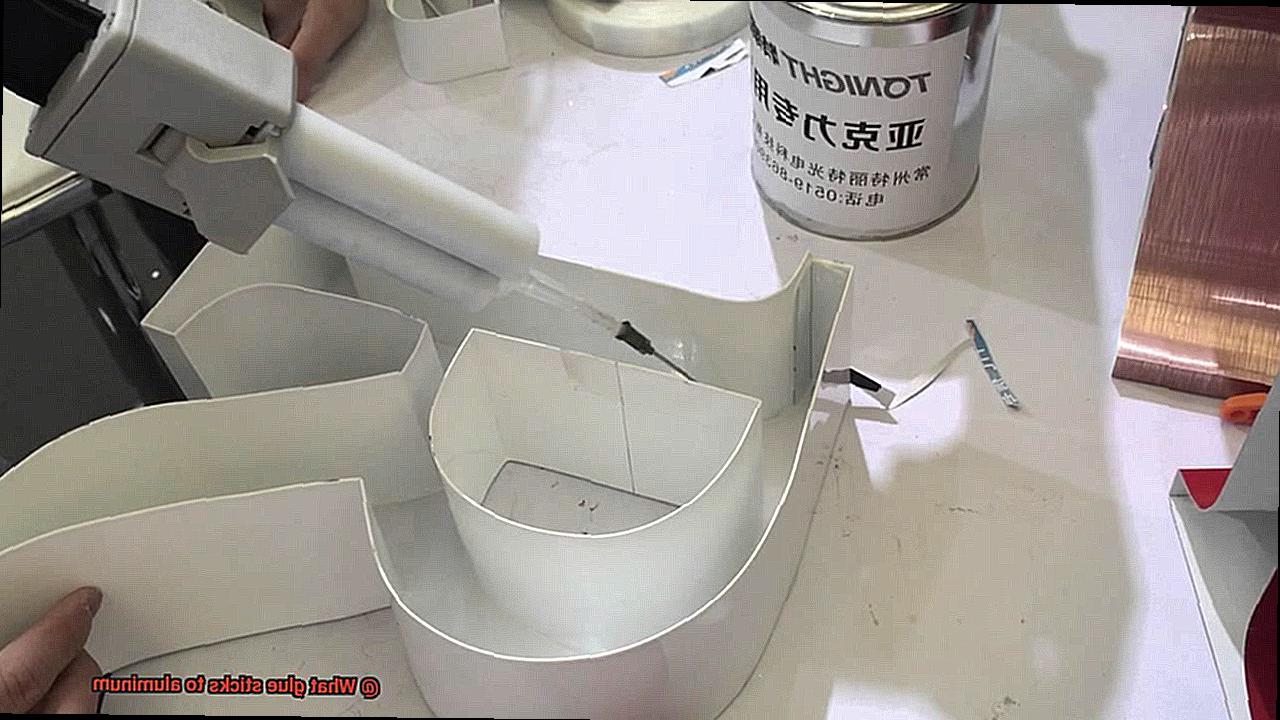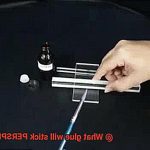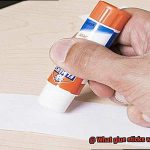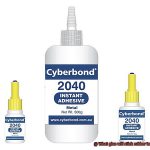Ever found yourself in a sticky situation, trying to figure out how to glue aluminum? Whether you’re rescuing a cherished piece of jewelry or embarking on an aluminum-fueled artistic adventure, knowing which glue to use is key.
Luckily, there are some seriously awesome options that’ll keep your aluminum pieces firmly together. From super-strong epoxy adhesives that could withstand a hurricane to specialized glues designed specifically for aluminum bonding, we’re about to dive headfirst into the world of sticking it to aluminum.
So grab your projects and let’s get stuck on the best glues for the job.
What is Aluminum and Why Bond it?
Contents
- 1 What is Aluminum and Why Bond it?
- 2 Different Types of Glue for Bonding Aluminum
- 3 Advantages and Disadvantages of Epoxy Adhesive
- 4 Advantages and Disadvantages of Cyanoacrylate Glue
- 5 Advantages and Disadvantages of Polyurethane Adhesive
- 6 Advantages and Disadvantages of Structural Adhesives
- 7 Preparing the Aluminum Surface Before Applying Any Glue
- 8 Choosing the Right Glue for Your Project Requirements
- 9 Conclusion
Step into the world of aluminum, a lightweight and versatile metal that has become indispensable in multiple industries. In this blog post, we will embark on a journey to uncover the remarkable properties of aluminum and understand why bonding it is paramount for countless manufacturing applications.
Properties of Aluminum:
- The Armor Against Corrosion: Aluminum boasts exceptional resistance to corrosion, making it the perfect choice for applications where durability and longevity are non-negotiable.
- The Heat Whisperer: With its outstanding thermal conductivity, aluminum swiftly transfers heat, positioning it as the go-to material for heat dissipation solutions like electronic device heat sinks and cookware.
- The Sculptor’s Delight: Aluminum’s high malleability and ductility allow it to be effortlessly shaped and formed into various structures or components, earning it a top spot across a wide range of industries.
Importance of Bonding Aluminum:
- Fortified Structural Integrity: By bonding aluminum parts together, a solid and seamless connection is established, enhancing structural integrity, particularly in load-bearing applications.
- Aesthetic Elevation: Bonding eliminates the need for unsightly fasteners or welding marks, resulting in a clean and polished appearance, crucial in products where aesthetics take center stage.
- Design Liberation: Bonding enables the fusion of aluminum with other materials such as glass or plastic, unlocking the potential to create innovative and lightweight composite structures.
Types of Adhesives for Bonding Aluminum:
- Epoxy Adhesive: Renowned for its robust bonding properties, epoxy adhesive forms an enduring bond when appropriately mixed and applied to aluminum surfaces.
- Cyanoacrylate Glue (Super Glue): Bonds rapidly and securely to aluminum surfaces but may not offer adequate flexibility or resistance to temperature changes for certain applications.
- Polyurethane Adhesive: Provides a potent and flexible bond with aluminum surfaces, making it ideal for applications where some movement or flexibility is expected.
- Structural Adhesives: Tailored adhesives like methyl methacrylate (MMA) or acrylic adhesives offer exceptional strength and enduring bonding performance, indispensable in industries like aerospace and automotive.
Different Types of Glue for Bonding Aluminum
When it comes to bonding aluminum, choosing the right type of glue is essential. There are several options available, each with its own strengths and weaknesses. Let’s explore some of the different types of glue that can be used for bonding aluminum.
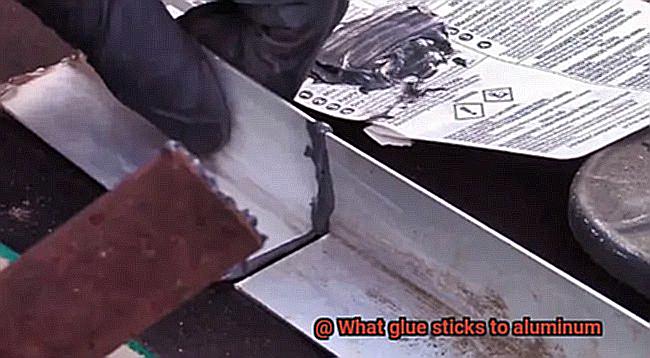
Epoxy adhesive
Epoxy glue is a popular choice for bonding aluminum due to its high strength and resistance to heat, chemicals, and moisture. It consists of a resin and a hardener that need to be mixed together before application. Once applied, epoxy forms a strong and durable bond that can withstand heavy loads and harsh environments.
Cyanoacrylate adhesive
Also known as super glue or instant glue, cyanoacrylate adhesive bonds quickly and securely to aluminum surfaces. It is easy to use and does not require any mixing or curing time. However, it may not be as strong as epoxy adhesive and may not perform well in high-temperature or high-moisture environments.
Polyurethane adhesive
Polyurethane adhesives are known for their flexibility and ability to withstand vibrations and impacts. They form a strong bond with aluminum surfaces and are resistant to water, chemicals, and temperature fluctuations.
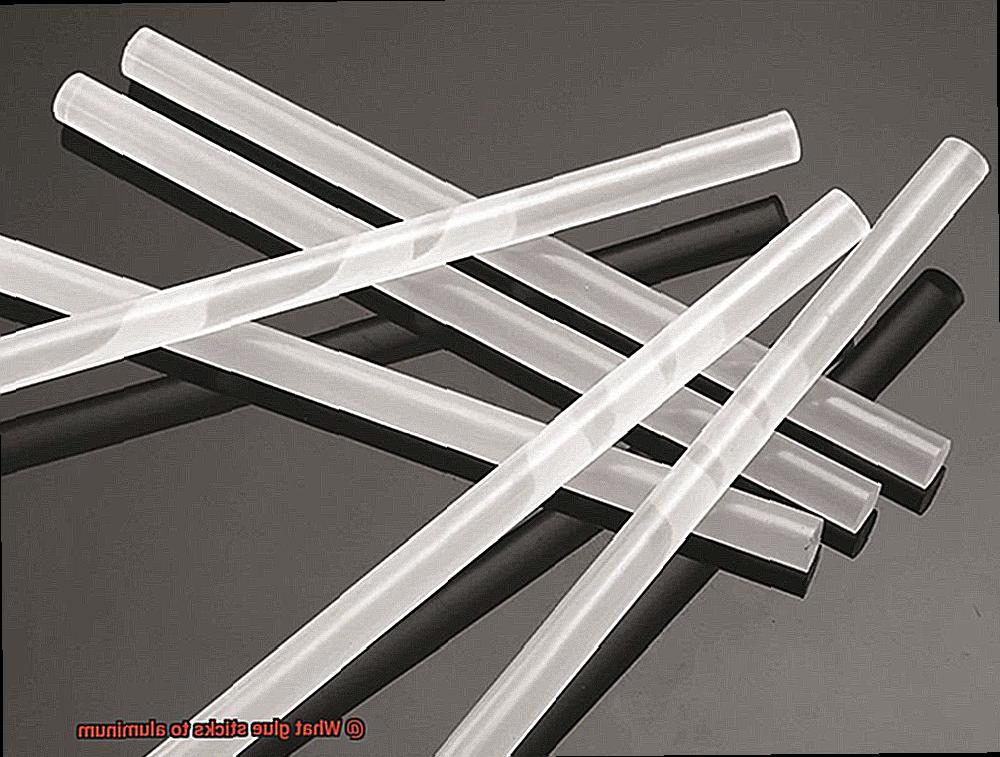
Acrylic adhesive
Acrylic adhesives, such as methyl methacrylate (MMA) or structural acrylics, create a strong bond with aluminum surfaces. They are resistant to water, UV rays, and temperature changes. However, they may not be as strong as epoxy or polyurethane adhesives.
Silicone adhesive
Silicone adhesive creates a flexible and durable bond that can withstand extreme temperatures and environmental conditions. It is resistant to moisture, chemicals, and UV rays. However, silicone adhesive may take longer to cure compared to other types of glue.
When choosing a glue for bonding aluminum, it is important to consider factors such as the strength of the bond needed, the environmental conditions, and the desired flexibility. It is also important to follow the manufacturer’s instructions for proper application and curing times.
In addition to these types of glue, there are also specialized aluminum bonding adhesives available in the market. These adhesives are specifically designed for bonding aluminum and offer high strength and durability.
Advantages and Disadvantages of Epoxy Adhesive
When it comes to bonding aluminum or other materials, epoxy adhesive stands out as a reliable superhero sidekick. However, like any adhesive, it has its own set of advantages and disadvantages that you should consider. So, let’s explore the strengths and weaknesses of epoxy adhesive, helping you make an informed decision before embarking on your next project.
Advantages:
- Strength: Epoxy adhesive boasts exceptional bonding strength, creating a durable and long-lasting connection between aluminum and other materials.
- Versatility: This adhesive can bond not only aluminum but also a wide range of materials such as wood, plastic, glass, and ceramics. Its versatility makes it a popular choice in both industrial and household applications.
- Resistance to Chemicals: Epoxy adhesive is highly resistant to chemicals like solvents, oils, and fuels. This makes it an ideal choice for industries that deal with harsh chemicals regularly, such as automotive and aerospace.
- Temperature Resistance: With excellent temperature resistance, epoxy adhesive maintains its bonding strength even in extreme conditions. It is perfect for applications involving high or low temperatures.
- Gap-Filling Properties: Epoxy adhesive excels at filling gaps and creating strong bonds even on irregular or uneven surfaces. It ensures a secure connection between aluminum and other materials.
Disadvantages:
- Longer Curing Time: Epoxy adhesives require several hours to reach their full bonding strength, which can delay project completion compared to other faster-curing adhesives.
- Mixing Requirement: Before application, epoxy adhesives need the resin and hardener components to be mixed together carefully. This process can be time-consuming and requires precise measurement to achieve the correct ratio.
- Limited Flexibility: Once cured, epoxy becomes rigid and lacks flexibility, making it unsuitable for applications involving joints or moving parts that require flexibility.
- Health and Safety Concerns: Epoxy adhesives may contain chemicals and volatile organic compounds (VOCs) that can be harmful if not used with proper ventilation or protective equipment. Users should take necessary precautions to avoid skin contact or inhalation of fumes.
- Cost: Compared to other adhesives, epoxy adhesive can be more expensive, especially for large-scale projects. Budget-conscious users should consider the cost factor before making a decision.
Advantages and Disadvantages of Cyanoacrylate Glue
Cyanoacrylate glue, also known as super glue, offers several advantages and disadvantages that should be considered before use. Some of the advantages of cyanoacrylate glue include:
- Fast bonding: Cyanoacrylate glue forms a strong bond within seconds, making it perfect for projects that require immediate adhesion.
- Versatility: This adhesive can bond various materials, including aluminum, and works well on both porous and non-porous surfaces.
- Resistance to temperature and moisture: Once cured, cyanoacrylate glue can withstand temperature fluctuations and exposure to water or humidity, making it ideal for outdoor applications.
- Clear finish: Cyanoacrylate glue dries clear, leaving behind an invisible bond without any visible residue or marks.
- Ease of use: It comes in user-friendly packaging options, such as tubes or bottles with applicators, making it easy to apply even for beginners.
However, there are also some disadvantages to using cyanoacrylate glue:
- Lack of flexibility: Over time, cyanoacrylate glue can become brittle, potentially weakening or breaking the bond under stress or movement.
- Limited gap-filling ability: It is not well-suited for filling gaps or uneven surfaces and works best when the surfaces being bonded are in close contact with each other.
- Sensitivity to moisture: Excessive humidity or moisture during the bonding process can affect cyanoacrylate glue’s ability to form a strong bond.
- Potential health hazards: Cyanoacrylate glue emits fumes during the curing process that can be irritating to the eyes, nose, and throat. It should be used in a well-ventilated area and skin contact should be avoided.
- Limited repositioning time: Once applied, there is limited time for repositioning or adjusting the bonded surfaces as the adhesive sets quickly.
Advantages and Disadvantages of Polyurethane Adhesive
Polyurethane adhesive, a go-to choice for bonding aluminum and other materials, boasts an array of advantages and disadvantages. Let’s delve into this adhesive’s enticing strengths and potential drawbacks.
Advantages:
- Unyielding bonding: Known for its exceptional bonding strength, polyurethane adhesive forms a resilient bond capable of withstanding heavy loads and stresses. This makes it an ideal option for applications that demand unwavering strength.
- Flexibility personified: Polyurethane adhesive is flexible in every sense of the word. It can be seamlessly used both indoors and outdoors, braving various weather conditions without compromising its bond strength. Be it an indoor craft project or an outdoor construction job, polyurethane adhesive has your back.
- Chemical resistance at its finest: If your project involves exposure to chemicals, fret not. Polyurethane adhesive rises to the occasion with remarkable resistance to many chemicals, ensuring that the bond remains intact even in harsh chemical environments.
- Gap-filling prowess: Imperfect surfaces need not deter you from achieving a robust bond. Polyurethane adhesive excels at filling gaps between substrates, creating a secure bond even on uneven surfaces.
Disadvantages:
- Patience is a virtue: Polyurethane adhesive demands your patience as it takes longer to cure compared to some other adhesives. Depending on the product, it may require several hours or even days to fully cure. Time-sensitive projects may necessitate exploring faster-curing alternatives.
- Shelf life constraints: Once opened, polyurethane adhesive has a limited shelf life. Exposure to air can initiate curing inside the container, rendering it unusable over time. Proper storage and handling are critical to maximizing its shelf life.
- Odor and toxicity implications: Certain formulations of polyurethane adhesive emit potent odors during the curing process, which may prove unpleasant or irritating to some individuals. Moreover, specific variants may contain toxic substances, necessitating proper ventilation and safety precautions.
- The challenge of removal: Once cured, polyurethane adhesive forms an unwavering and permanent bond. While this attribute ensures long-term durability, it can complicate repairs or disassembly. Specialized solvents or mechanical methods may be necessary to remove the adhesive.
Advantages and Disadvantages of Structural Adhesives
Structural adhesives have become a popular choice for bonding materials together in various industries. While they offer numerous advantages over traditional mechanical fasteners, they also come with some drawbacks. In this article, we will delve into the advantages and disadvantages of using structural adhesives, providing a comprehensive understanding of their capabilities and limitations.
Advantages of Structural Adhesives:
High Strength:
- Structural adhesives provide outstanding bond strength, comparable to or even surpassing welding or riveting.
- Ideal for load-bearing structures that require maximum durability.
Stress Distribution:
- Unlike mechanical fasteners that concentrate stress at specific points, structural adhesives distribute stress evenly across the bonded area.
- Improves overall durability and reliability by reducing the risk of stress concentration and potential failure points.
Design Flexibility:
- Enables the joining of different materials, offering enhanced design flexibility.
- Allows for creative designs and the use of dissimilar materials in various applications.
- Eliminates the need for additional drilling or punching holes, preserving structural integrity.
Aesthetic Appeal:
- Provides a clean and seamless appearance without visible fasteners or joints.
- Ideal for industries where aesthetics matter, such as automotive or aerospace.
Corrosion Resistance:
- Certain structural adhesives offer excellent resistance to corrosion.
- Suitable for bonding aluminum and other metals in environments with moisture or chemical exposure.
- Extends the lifespan of the bonded joint by providing a protective barrier against corrosion.
Disadvantages of Structural Adhesives:
Surface Preparation:
- Proper surface preparation is crucial for optimal bonding strength.
- Requires thorough cleaning, degreasing, and sometimes roughening or priming surfaces.
- Time-consuming and may require specialized equipment or expertise.
Cure Time:
- Structural adhesives require a curing process to reach full strength.
- Cure time varies based on adhesive type, temperature, and humidity.
- Long cure times can impact production timelines.
Limited Gap-Filling Capability:
- Structural adhesives have limited gap-filling ability.
- Bonding surfaces need to be in close contact for effective adhesion.
- Precise alignment and tight fitting of parts are essential.
Difficulty in Disassembly:
- Once bonded, disassembly or repair becomes challenging without damaging the materials.
- Specialized techniques or equipment may be required.
Cost:
- Structural adhesives can be more expensive compared to mechanical fasteners.
- Costs include adhesives, surface preparation, and curing processes.
- However, the long-term benefits may outweigh the initial investment.
Preparing the Aluminum Surface Before Applying Any Glue
If so, buckle up and get ready to learn the essential steps for preparing your aluminum surface before applying any glue. By following these meticulous steps, you’ll guarantee a bond that is not only strong but also capable of withstanding the test of time.
Step 1: The Art of Thorough Cleaning
Before even thinking about applying glue, it is crucial to clean the aluminum surface thoroughly. Any lingering dirt, grease, or oil can act as a formidable obstacle to achieving optimal adhesion. To tackle this challenge head-on, create a gentle solution by mixing a mild detergent or dish soap with water. Armed with a soft cloth or sponge, scrub the surface diligently, leaving no trace of contaminants behind. Rinse the surface with clean water and exercise patience as you allow it to dry completely before advancing to the next step.
Step 2: Embrace the Power of Roughening
To unlock the full potential of adhesion, it is highly recommended to give the aluminum surface a touch of roughness. This can be accomplished by employing the mighty tools of sandpaper or a sanding block. With your chosen weapon in hand, gracefully glide it across the surface in smooth circular motions, applying even pressure throughout. The objective here is to create a delicately textured landscape that provides an ample gripping terrain for the glue. Once you’ve achieved this feat, swiftly eliminate any residual dust or debris using either a clean cloth or a burst of compressed air.
Step 3: Banishing Oxide Layer (If Necessary)
In some cases, aluminum surfaces may be plagued by the presence of an oxide layer that must be vanquished before embarking on the gluing adventure. This layer can prove detrimental to optimal adhesion. Fear not, for there are two paths you can take to conquer this foe.
The first option entails utilizing an aluminum cleaner or brightener, following the sacred instructions bestowed upon you by its manufacturer. With these holy guidelines in mind, apply the cleaner diligently, and with a gentle brush or sponge, scrub away the oxidation. Rinse the surface thoroughly and allow it to dry completely.
Alternatively, you may choose to wield the power of an acid-based solution, such as vinegar or lemon juice, to dismantle the oxide layer. Apply this acidic concoction onto the aluminum surface and grant it a few minutes to work its magic.
Once time has elapsed, unleash your gentle brush or sponge upon the battlefield, meticulously scrubbing away the oxidation. Rinse the surface with water, ensuring that every last trace of acid is expelled from its realm. Patience is once again required as you allow the surface to dry completely before proceeding.
Choosing the Right Glue for Your Project Requirements
When it comes to bonding aluminum, selecting the right glue is paramount for ensuring a strong and lasting bond. Aluminum is a versatile metal used in various applications, so finding a glue that sticks effectively to it is essential. Let’s explore some options and considerations for choosing the right glue for your project requirements.
- Epoxy Adhesive: Epoxy adhesives are known for their strong bonding properties and versatility. They can adhere to a wide range of materials, including aluminum. If you’re looking for a long-lasting bond, epoxy adhesive is an excellent choice. It offers exceptional strength and durability, making it ideal for projects that require a reliable bond.
- Cyanoacrylate Adhesive (Super Glue): Super glue is a fast-acting adhesive that forms an instant bond when it comes into contact with the surface of the material. It works well on smooth surfaces like aluminum, providing a strong and reliable bond. However, keep in mind that super glue may not be suitable for projects that involve high temperatures or extreme conditions.
- Silicone Adhesive: For projects requiring resistance to extreme conditions or high temperatures, such as outdoor applications, silicone adhesive is recommended. Silicone adhesives have excellent heat resistance and can withstand harsh environmental factors, making them ideal for bonding aluminum in these situations.
Considerations:
- Surface Preparation: To ensure a strong bond, it is essential to prepare the surface of the aluminum properly. Clean the surface thoroughly by removing any dirt, oil, or grease using a solvent or degreaser. Additionally, roughening the surface with sandpaper or a wire brush can improve the adhesion of the glue.
- Compatibility: Some glues specifically designed for metal bonding may not work effectively on aluminum due to its unique properties. Always check the manufacturer’s instructions and product specifications to ensure compatibility with aluminum.
eub3GnzkIZA” >
Also Read: How to Glue Aluminum to MDF?
Conclusion
Finding the right adhesive to bond aluminum can be a sticky situation.
But fear not, for there are glues out there that can form a strong and durable bond with this metal marvel. When it comes to sticking aluminum together, you want a glue that is up to the task.
Look no further than epoxy adhesives, which have proven themselves time and time again in the realm of aluminum bonding. These mighty glues contain two components – resin and hardener – that when mixed together create a chemical reaction resulting in a powerful adhesive bond.
Another option worth considering is cyanoacrylate glue, also known as super glue. This fast-acting adhesive forms an instant bond with aluminum, ensuring a secure connection.
Just remember to clean the surface thoroughly before applying the glue, as any dirt or grease can hinder its effectiveness.

